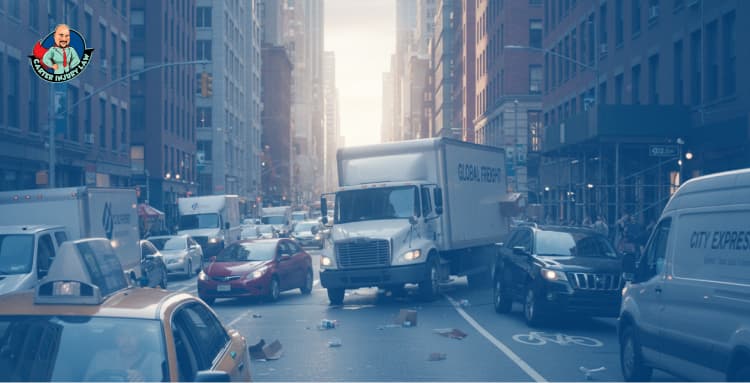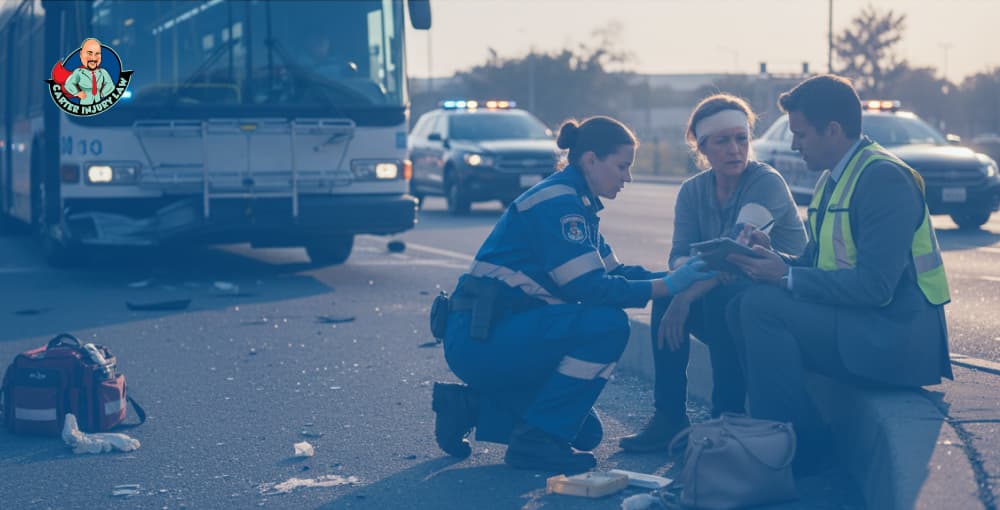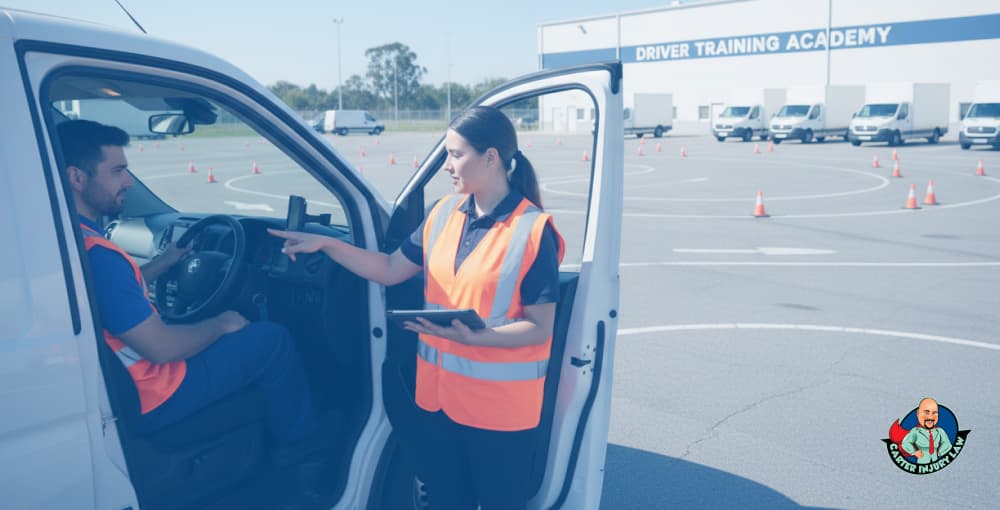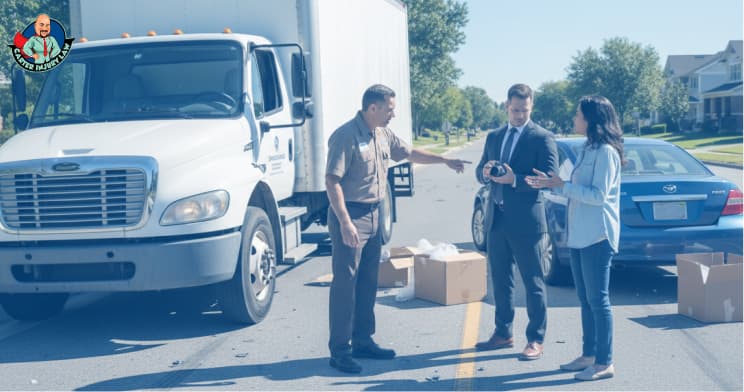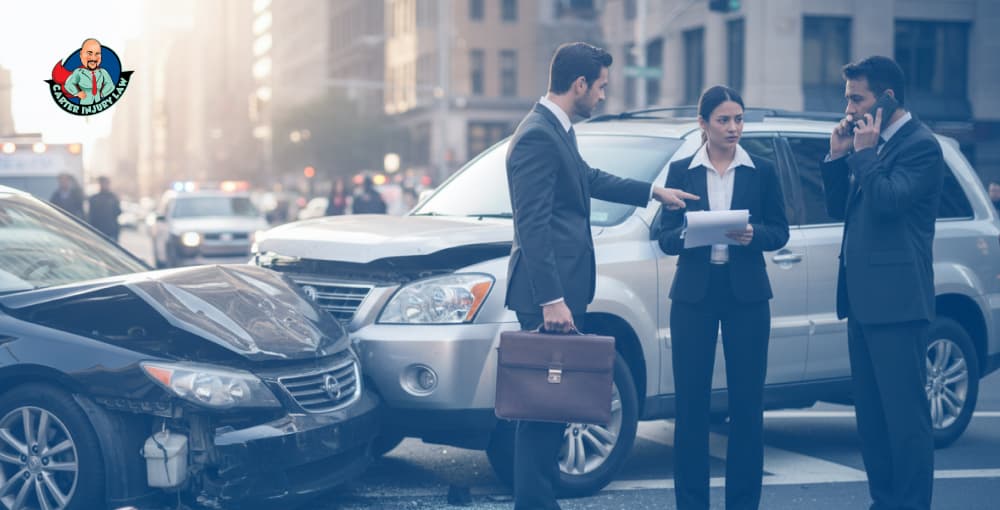Delivery trucks cause more accidents than most people notice in Florida. Every week at work, I witness the chaos left behind by a crash, the confusion that comes next, and the families attempting to make sense of what hit them. These trucks move fast through busy streets, often with drivers under pressure to meet impossible delivery times. One wrong turn or one missed glance can turn a routine day into a disaster.
What many do not see is how often these accidents happen and how they unfold in ways that leave victims feeling numb. I have watched it happen too many times, and what I discovered about why these crashes keep happening still unsettles me.
1) Common Causes I See in Cases
I have spent years studying how delivery truck accidents really happen in Florida, and it is rarely as simple as a careless driver. The truth is, most of these crashes begin long before the moment of impact. They start in warehouses and loading docks where schedules are tight and pressure runs high.
Drivers are often pushed to cover long routes in a short time, sometimes skipping breaks or cutting corners to stay on track. That pressure shows up on the road. Fatigue dulls reaction times, impatience grows, and judgment slips.
Then there are the conditions unique to Florida itself. The heat wears on both vehicles and people. Afternoon storms roll in without warning, making roads slick and visibility poor. Tourists fill the highways, and traffic in cities like Orlando or Tampa never seems to stop.
A delivery truck, heavy and slow to maneuver, becomes a hazard in that kind of chaos. I have seen drivers try to brake too late on wet pavement or swerve to avoid another car, and the result is always damage, injury, and confusion.
Companies often bear a share of the blame, but they do not make it easy to prove. They have teams of lawyers and insurance adjusters ready to protect their bottom line. That is where my work begins. I look at logbooks, delivery schedules, and maintenance records to find out if someone pushed that driver too far or ignored signs that the vehicle was unsafe. Sometimes the evidence shows a pattern, a company cutting safety corners again and again until someone gets hurt.
Every case has its own story, but they all carry the same lesson. Behind each crash is a chain of small decisions that could have been made differently. And the people who suffer most are rarely the ones who caused it.
2) How I Hold Drivers and Companies Accountable

When someone comes to me after a delivery truck accident, the first thing I do is listen. People often arrive shaken, unsure of what to do next, and buried under paper from insurance companies. I tell them to take a breath. What happened to them is something that deserves careful attention. Every detail, from the time of day to the angle of the skid marks on the road. These details tell the real story of how and why the crash happened.
I start by gathering everything that can help build that story. Police reports, photos from the scene, black box data from the truck, maintenance logs, and driver schedules. These pieces often reveal patterns that point to negligence. Maybe the driver had been behind the wheel for twelve hours straight. Maybe the company delayed routine maintenance to keep the truck running. I have seen engines fail because no one checked the oil, and brakes give out because someone skipped an inspection to save time. These things are not coincidences.
Florida law allows victims to seek compensation for what they have lost, but it is not just about money. It’s more about accountability. When a company puts profit ahead of safety, or when a driver is forced to choose between keeping a job and following the rules, someone has to step in and make it right. That is where I come in. I walk my clients through the legal process, explaining each step so they are never left wondering what comes next.
The law can be complex, but justice does not have to be confusing. My goal is to make sure my clients feel seen, heard, and protected while I handle the fight on their behalf. Because behind every case file is a person trying to rebuild their life, and that is what keeps me doing this work.
3) What You Can Do Immediately After an Accident
Over time, I have learned that knowing what to do right after a delivery truck accident can make a huge difference in the outcome of a case. The hours and days after the crash are often a blur, but they are also when the strongest evidence is found. I always tell my clients to act quickly and stay calm. The right steps taken early can protect both their health and their rights.
Here is what I guide them to do:
Get medical help right away. Even if injuries seem minor, hidden trauma can surface later. A medical record helps connect your injuries directly to the crash.
Call the police and make sure a report is filed. That report becomes an official record, and it can be crucial when determining liability.
Take photos and gather contact information. The condition of the vehicles, the road, and any witnesses all paint a clearer picture.
Do not discuss fault at the scene. Let the evidence speak. Even a simple apology can be misinterpreted by insurers as an admission of guilt.
Avoid signing or agreeing to anything from the delivery company or their insurer. They are trained to minimize payouts, and once a release is signed, it can be difficult to undo.
When clients come to me, I take all that information and start building their case piece by piece. I contact experts to analyze the truck’s data, investigate the company’s safety practices, and calculate the full scope of losses. That includes medical bills, lost wages, and the pain that never makes it into a spreadsheet but still defines someone’s recovery.
I work on a contingency fee basis, which means my clients do not pay unless we win. I want them focused on healing, not worrying about hourly fees or hidden costs. Every case becomes a partnership built on trust. My clients handle their recovery, and I handle the rest.
The mission is to make sure those responsible are held accountable and to give my clients a real chance to rebuild their lives with dignity.
4) What Florida’s 2025 Truck Crash Reports Show Me

This year alone, Florida has seen more delivery truck crashes, and each one tells a story that never makes it to the headlines. I keep track of these incidents because they shape how I fight for my clients. Behind every case number is a person who did not expect their day to end in a collision with a truck that should have been driven, maintained, or managed with more care.
In August 2025, a semi trailer attempted an illegal turn on the Florida Turnpike near mile marker 170. The driver blocked several northbound lanes, and a minivan traveling behind had no chance to stop in time. The impact was devastating. Three passengers in the minivan died at the scene, while the truck driver walked away unharmed.
A few months earlier, in March 2025, tragedy struck again in Citrus County. A dump truck crossed into oncoming traffic on West Homosassa Trail and collided with a minivan carrying a local teacher named Crystal Jackson and her three children. I read that report and felt the same frustration I always do, knowing that a simple failure to yield had destroyed a family.
Then there was the ripple effect of these incidents on state policy. After the Turnpike crash, Florida officials began tightening oversight on trucking operations. The New York Post reported that weigh stations were being converted into checkpoints for stricter enforcement. It is a step in the right direction, but I keep thinking of the families who lost everything before those changes took shape. Legal accountability should never depend on tragedy to get attention.
These reports serve as a reminder to me that delivery truck accidents in Florida are not slowing. Each one reveals how fragile safety becomes when speed, fatigue, and pressure meet on the same road. And until accountability becomes a priority at every level, families will keep paying the price for someone else’s negligence.
5) Why I Keep Fighting for Victims of Truck Accidents

In every case, I see how these accidents run through a person’s life long after the crash is over. A delivery truck collision is rarely just a moment on the road. It can change how someone works, sleeps, and even how they see the world. Families take on the weight of medical bills, missed paychecks, and long months of recovery. Some clients tell me the hardest part is not the pain itself but the feeling that they have to fight alone against large companies that seem untouchable.
That is why I make it my job to level that playing field. When I take on a case, I bring in investigators, accident reconstruction specialists, and medical experts to back every claim with solid evidence. I negotiate directly with insurance companies so my clients do not have to repeat their trauma to people who see them as numbers.
And when the other side refuses to take responsibility, I take the fight to court. I have seen juries respond when the truth is laid out clearly and the human cost is impossible to ignore.
Florida roads will always be busy, and delivery trucks are not going anywhere. But holding companies accountable can make the roads safer for everyone. If you or someone you love has been hurt in a delivery truck accident, I want you to know you have options.
My name is David Carter, and at Carter Injury Law, we fight for those who have been left behind in the rush of someone else’s schedule. You can reach out anytime, and remember, you do not pay unless we win your case.



